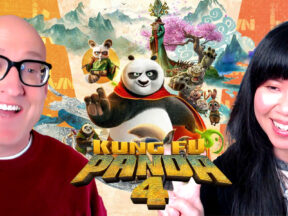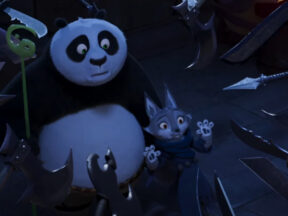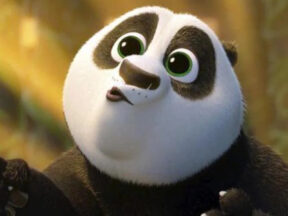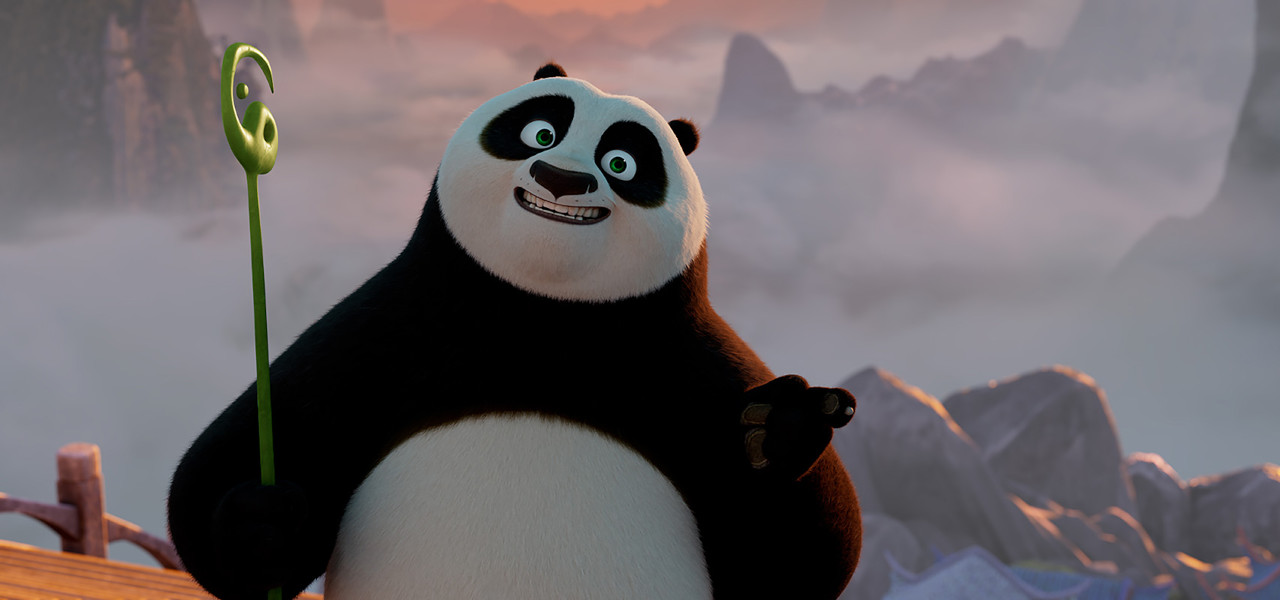
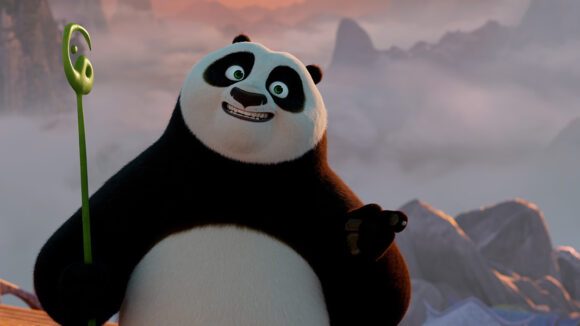
‘Kung Fu Panda 4′ Reviews Roundup: Critics Split On Dreamworks’ Latest
Universal Pictures will release Dreamworks’ fourth theatrical Kung Fu Panda film in theaters this weekend, so we’re checking in on what critics have to say about the franchise’s latest installment.
Directed by Mike Mitchell and co-directed by Stephanie Ma Stine, Kung Fu Panda 4 comes eight years after Kung Fu Panda 3, although there have been several series and special adaptations since then.
In the new film, franchise protagonist Po, also known as the Dragon Warrior, is tasked with taking over as the spiritual leader of the Valley of Peace. As part of the transition, he must find a new fighter to take up the Dragon Warrior mantle. Complicating the situation, a new shapeshifting villain known as Chameleon has started terrorizing the area as she looks to get her hands on Po’s Staff of Wisdom, which would allow her to bring back all the villains Po has previously banished from the valley.
Reviews for Kung Fu Panda 4 are all over the place. Some critics are praising its story, sense of humor, and animation, while others say that the franchise’s latest film is a step backward in nearly every department. After reading more than a dozen reviews, we get the impression that hardcore fans of the first three films will find plenty to enjoy this time around, but casual fans or anyone not already invested in the franchise may be disappointed with what they get.
Here’s what critics are saying about Kung Fu Panda 4.
Frank Scheck at The Hollywood Reporter summed up the film’s mixed appeal, writing:
This humor in this edition doesn’t seem as broad as usual, with the mostly low-key laughs coming from amusing visual gags like a very careful chase through a jade shop and such throwaway lines as Po plaintively asking, “Are my adventures really that regional?” when no one in Juniper City recognizes him. Many of the gags are either derivative or homages, depending on your perspective, including the vicious killer bunnies that bring to mind Monty Python and the Holy Grail. But that doesn’t make them any less funny. And it’s worth sitting through the end credits just to hear the terrific Tenacious D cover version of Britney Spears’ “Baby One More Time.”
Wilson Chapman at Indiewire says the film meets the high standards set by previous films from the franchise:
The Kung Fu Panda movies have always excelled based less on story and more on style; at their best, the films offered action scenes up there with the best any animated film has to offer. Kung Fu Panda 4 ably continues that legacy. Director Mike Mitchell and co-director Stephanie Ma Stine, making their debut in the franchise, effectively stage a variety of acrobatic, wuxia-inspired showdowns with inventive combat and satisfying weight to them, including a climatic battle that ranks among the best seen in these films. The film’s animation is consistently gorgeous, and there’s a variety of visually inventive locations (a tavern staffed by enslaved bunnies located precariously on a rocky ledge) and characters (an Arowana fish pirate, voiced by Ronny Chieng, living inside a pelican’s mouth).
Emma Stefansky at IGN would have preferred the film did more showing and less telling:
Director Mike Mitchell has a proven track record in animation, but the Trolls and Lego Movie 2 filmmaker is working in the Kung Fu Panda universe for the first time, and his take – along with that of co-director Stephanie Ma Stine – seems like it’s meant to lead the series in a new direction. Kung Fu Panda 3 felt like the conclusion to a trilogy, so this movie’s preoccupation with succession and moving on is deliberate. Occasionally it works, and occasionally it feels a little bit like fanfiction, like the characters are just telling you what Kung Fu Panda 4 is about. Still, it never feels like it’s trying too hard to reel you back in or convince you that this thing is just like that other thing you already like. And by the end, you’re just as hungry for a big bowl of dumplings as you were the first three times you met Po.
Writing for the AV Club, Courtney Howard disagreed regarding the film’s animation:
Unfortunately, even the animation is a step down, failing to deliver the breathtakingly detailed, textured aesthetics that made these films dazzle and beguile in the past. Gone is the lush, tactile imagery where every frame feels like a painting, and in its place is a workman-like product. Unlike the second film, which incorporates a variety of visual styles to move character and story development forward with 2d and die-cut silhouettes, Kung Fu Panda 4 uses an anime-style split screen. There is a modicum of immersive fun to be had.
Variety’s Owen Gleiberman was unimpressed with the film’s action set pieces, not good for a kung fu flick, writing that they fail to exploit the flexibility offered by animation:
Even after 16 years of Po, you want to hear Jack Black’s voice charged with that youthful cockeyed exuberance, rather than the older-and-wiser aura he exudes here. You also wish the movie had better jokes. Mitchell, co-directing with Stephanie Stine, doesn’t stage the action bouts with the surreal freedom that animation makes possible. Po goes through the motions, but I’m sorry, the kick is gone.

.png)
